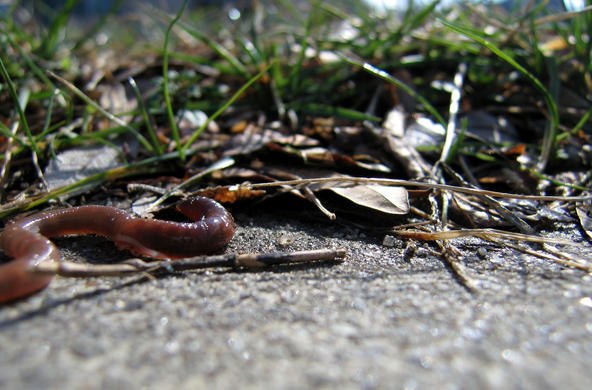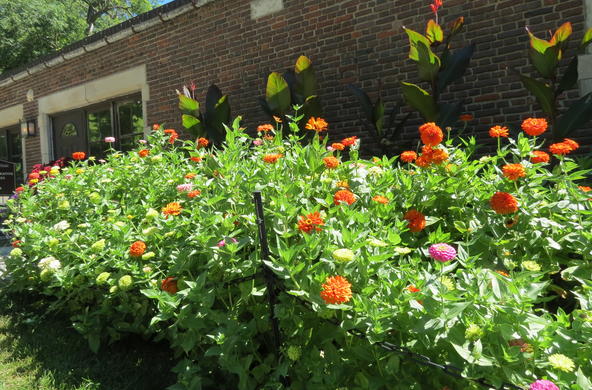"It may be doubted whether there are any other animals which have played so important a part in the history of the world as have these lowly, organized creatures."
Charles Darwin, about earthworms
Every gardener knows earthworms are good. When you dig a shovel-full of soil and it's worm-ridden, you think "This is healthy ground."
But in Connecticut, and in most of the northern part of the U.S., those worms -- which our parents praised to us and which fascinated Charles Darwin -- are invaders.
Slow ones, granted, but a non-native species nevertheless.
And while we may like them in our compost piles, they're very bad when let loose in our forests.
"It's a different story," said Peter Groffman, a microbial ecologist at the Cary Institute for Ecosystems Studies in Millbrook, N.Y.
Groffman is one of several scientists who are studying the effect of earthworms in forests. What he is finding is that where they are present, they're speeding up the process of breaking apart the dense forest floor, also know as the duff.
"It means carbon loss and biodiversity loss," he said.
Earthworms are non-native species because of the glaciers.
For tens of thousands of years, Connecticut, like the rest of the northern U.S., was completely covered by a layer of ice a mile or two thick. It killed the worms.
The native American earthworms are those in the Southeast and the Pacific Northwest.
The earthworms we have came with the European settlers -- in the balls of soil around plants, in the soil they used for ballast in their ships.
The influx continues today. When people buy worms for their compost piles, they are exotics. There are about 45 different species of non-native earthworms around.
In the garden, they're OK. Groffman said that while he's not sure they help the soil all that much, having them eating their way through the organic matter is good evidence that there is a lot of said organic matter available.
The forest floor is different. After the glaciers retreated 15,000 years ago, they built up a tough layer of duff, created by century after century of leaves falling and decaying.
Earthworms aerate this soil faster than is natural. They chew through the layer.
They add nitrogen to the soil and change its chemistry. They allow a quicker release of carbon from the soil, Groffman said.
This ends up damaging biodiversity -- wildflowers and ferns that grow naturally in the woods suffer where worms have aerated the soil.
Groffman said some salamander species are affected as well.
Researchers at Cornell University have also found evidence that where earthworms feed, other invasive species have an easier time getting established.
Where worms chew, Japanese barberry and Asiatic bittersweet take root.
Groffman said it is not clear whether earthworms are also slowing the growth of the trees over them. That's something he and other researchers are studying.
The good thing about earthworms is that they don't move fast. It takes them a while to colonize a place.
But like any invasive species, once they're in a spot, it's really hard to get them out.
What humans can do now is simply not spread them.
That means fishermen using nightcrawlers and earthworms as bait should throw them in the water at the end of the day, rather than in the woods.
In Minnesota, there's a "Contain Those Crawlers'' campaign to educate anglers about worms and the damage they do.
And it means educating even organic types.
"I tell people why it's a problem," Groffman said, "and they think I'm nuts."






